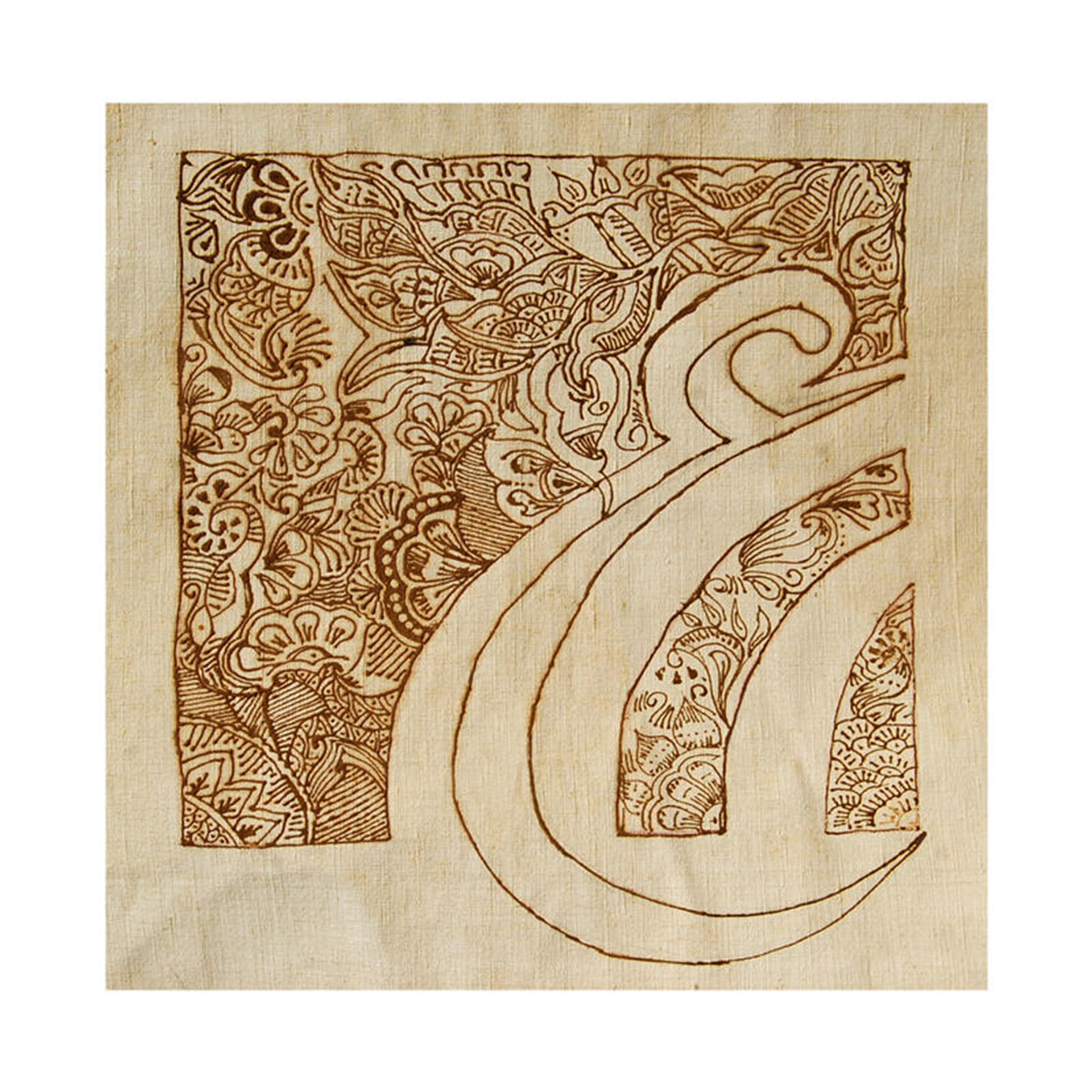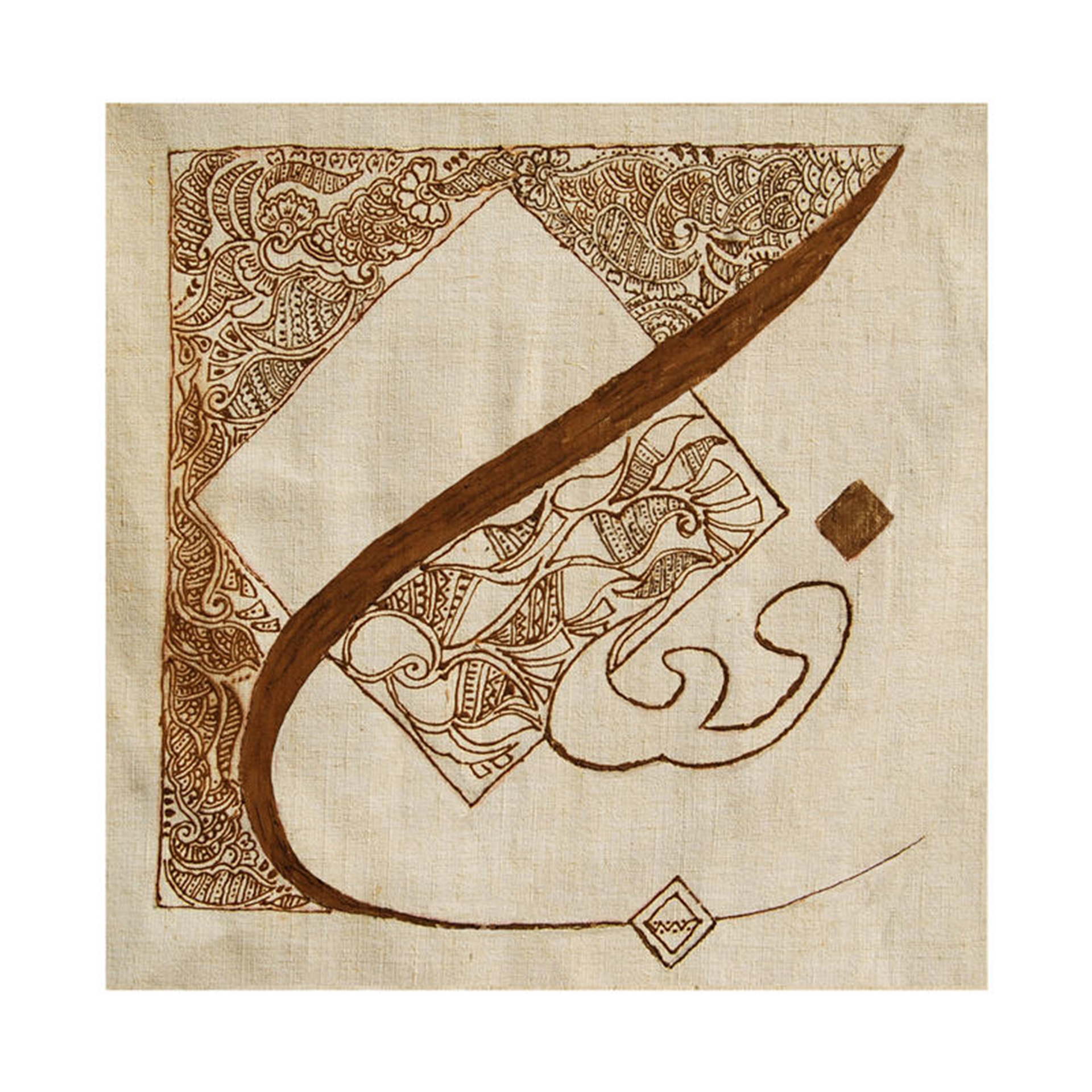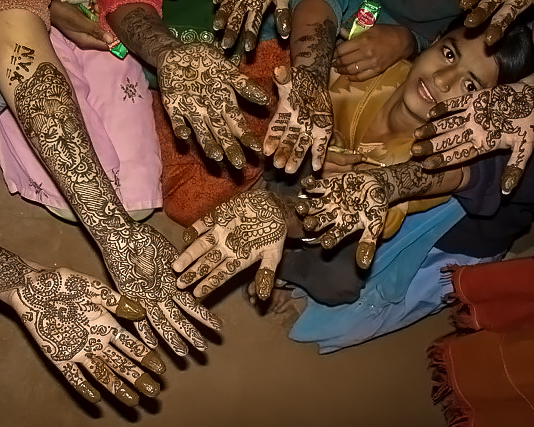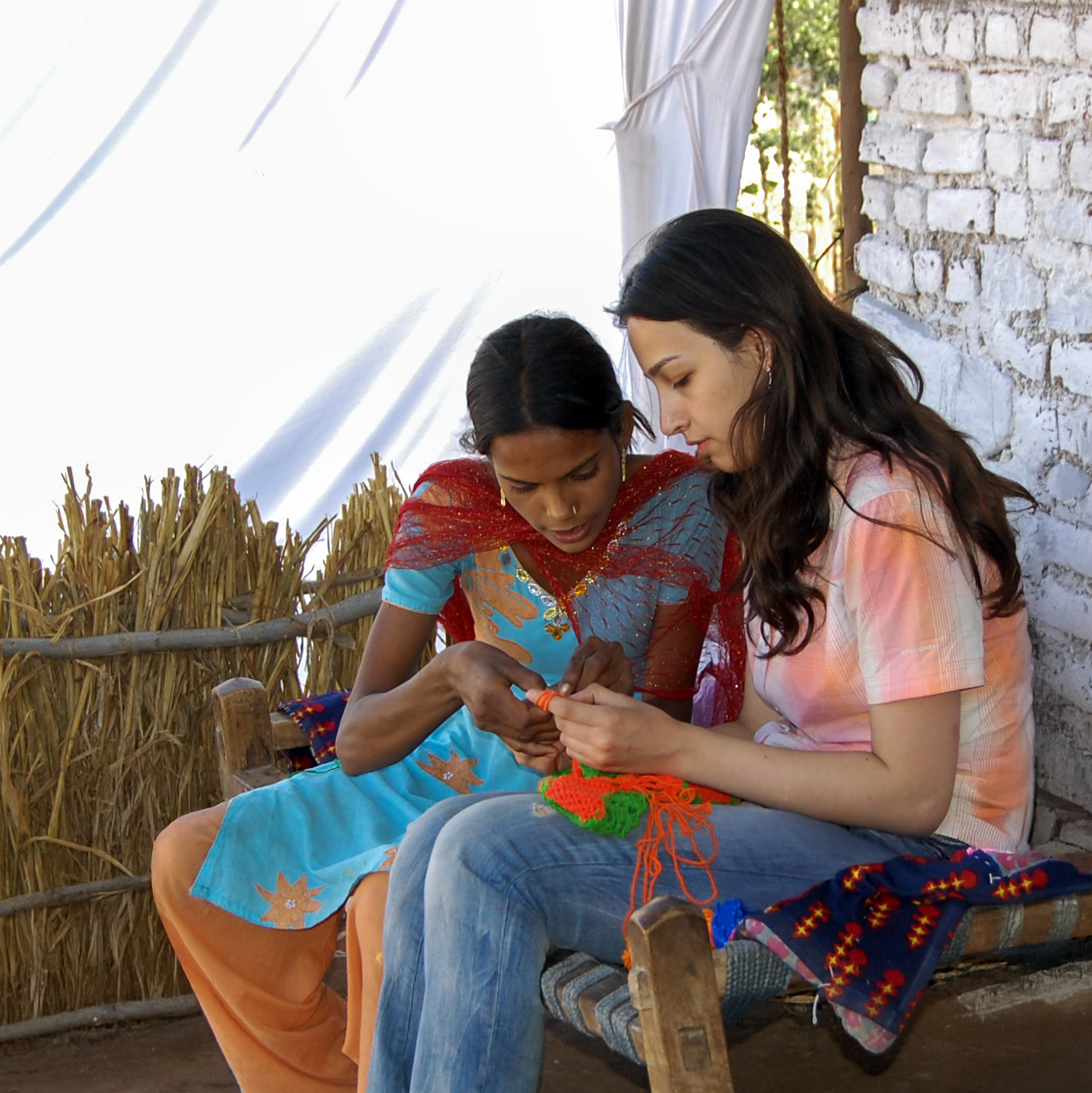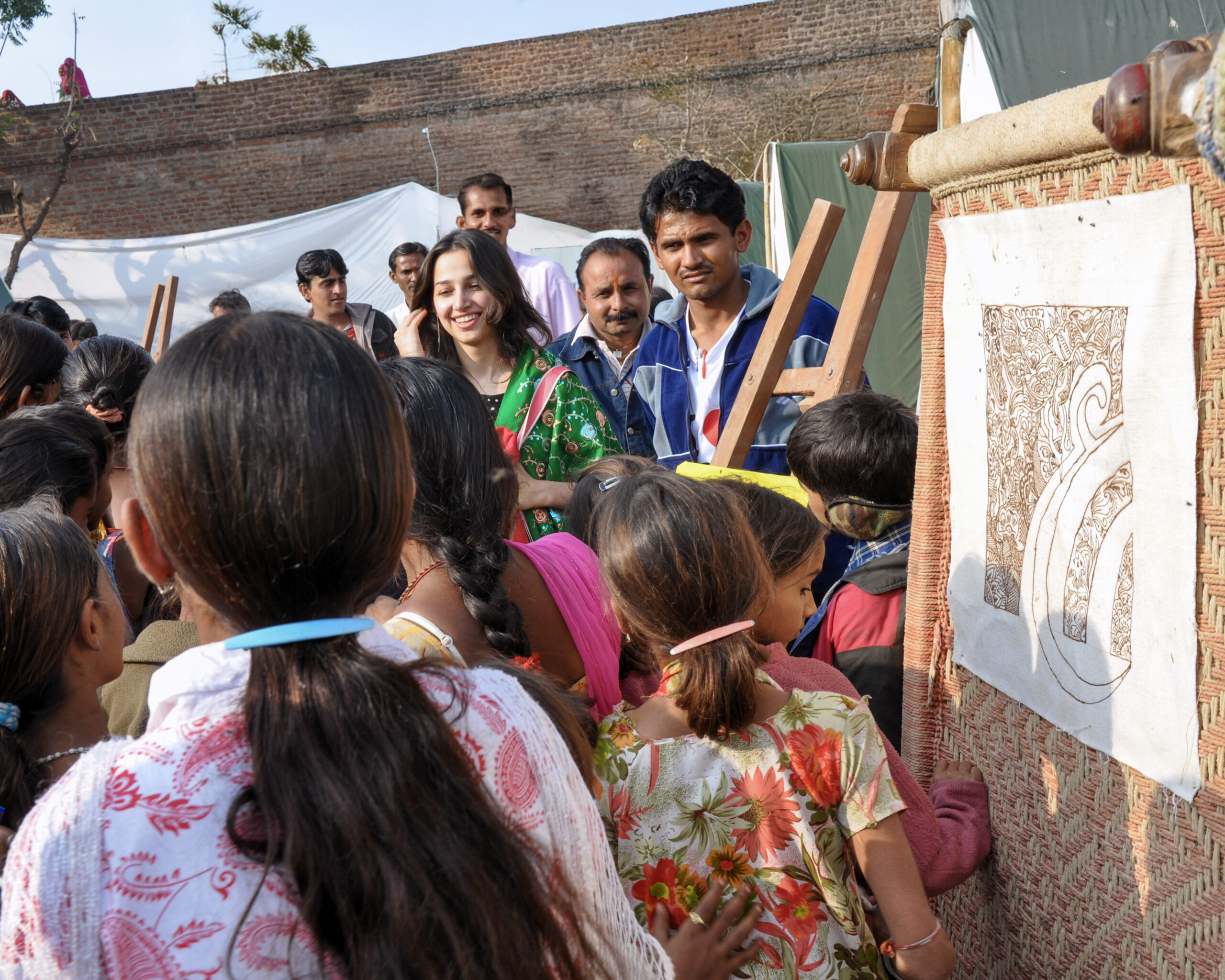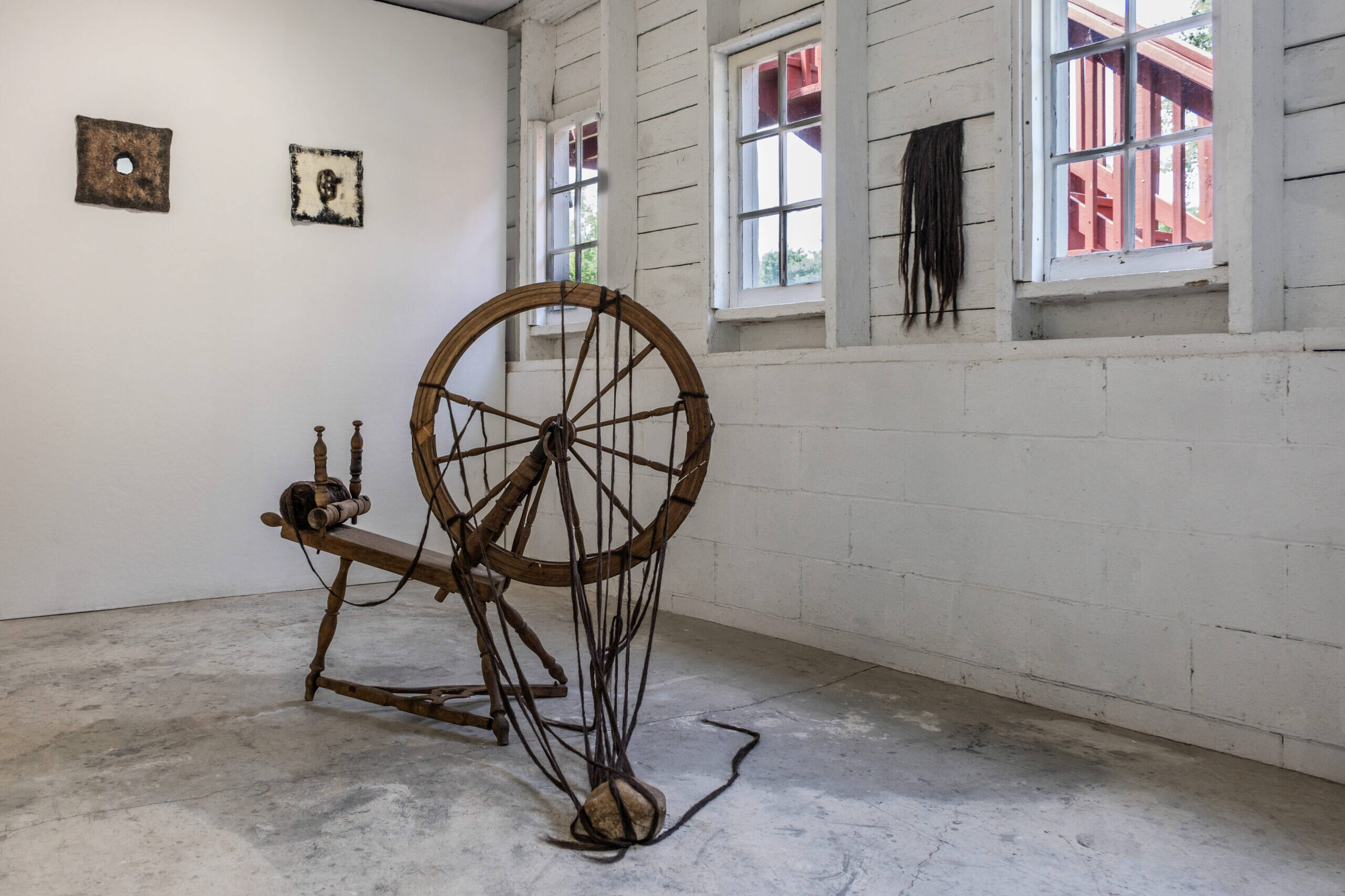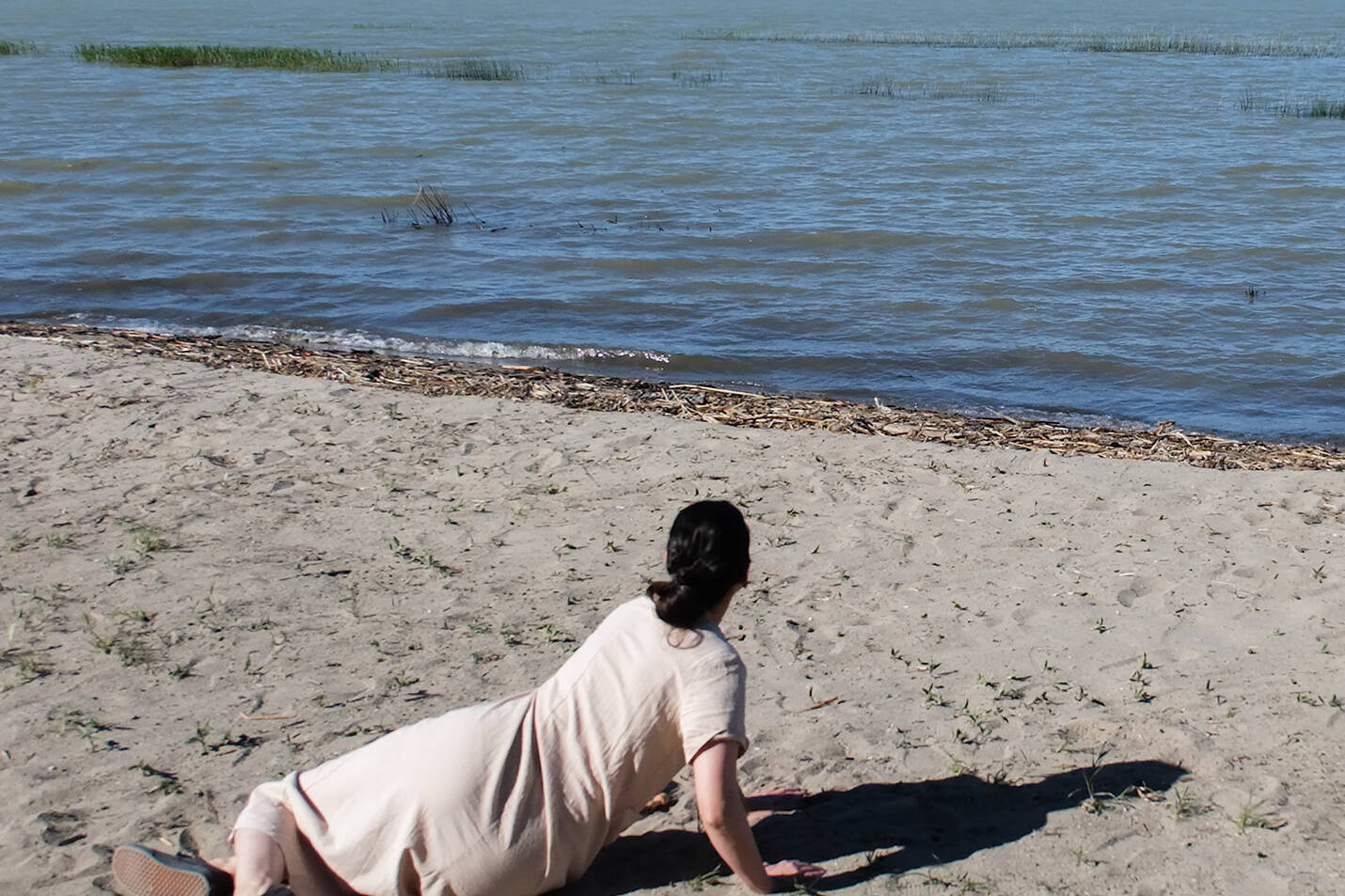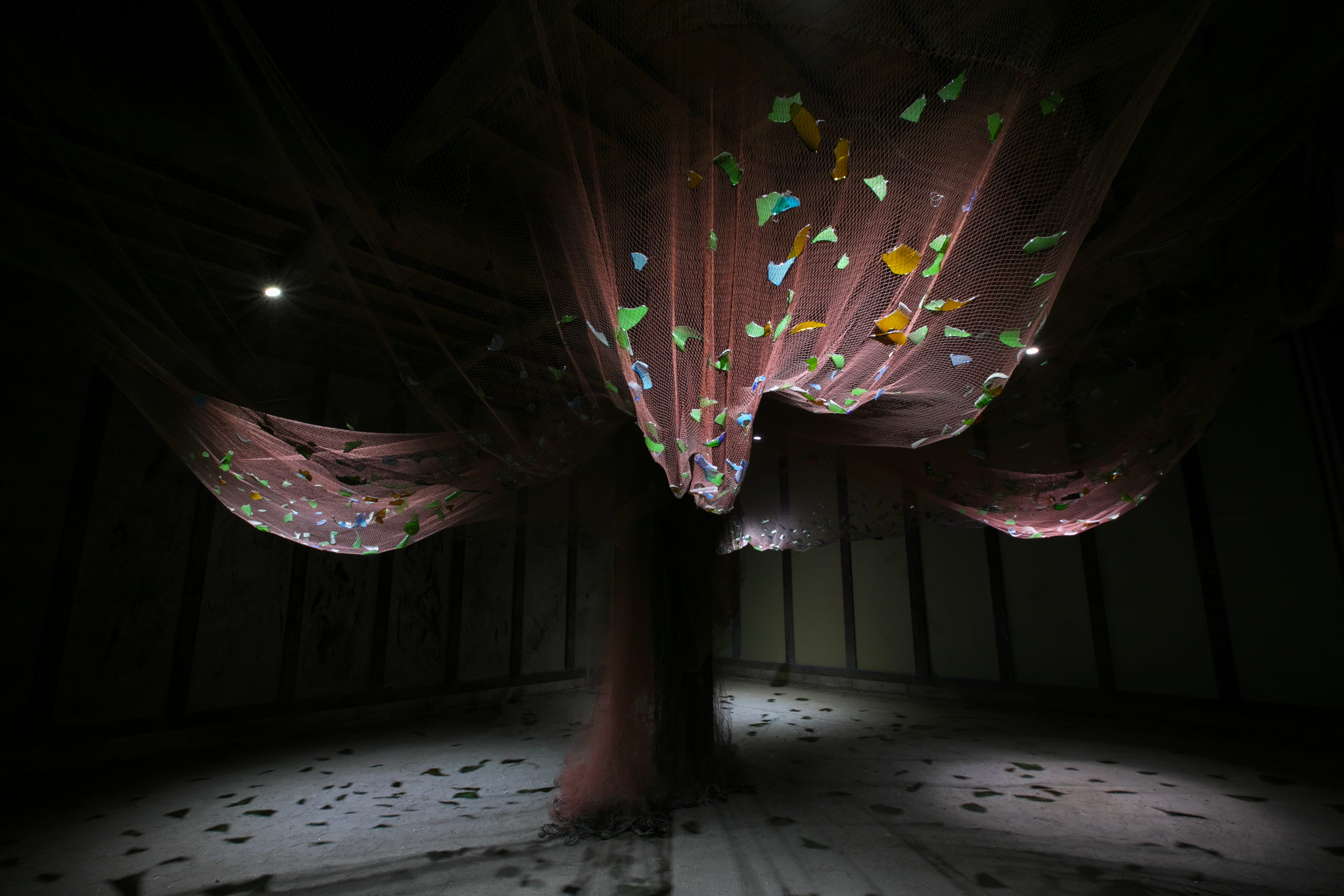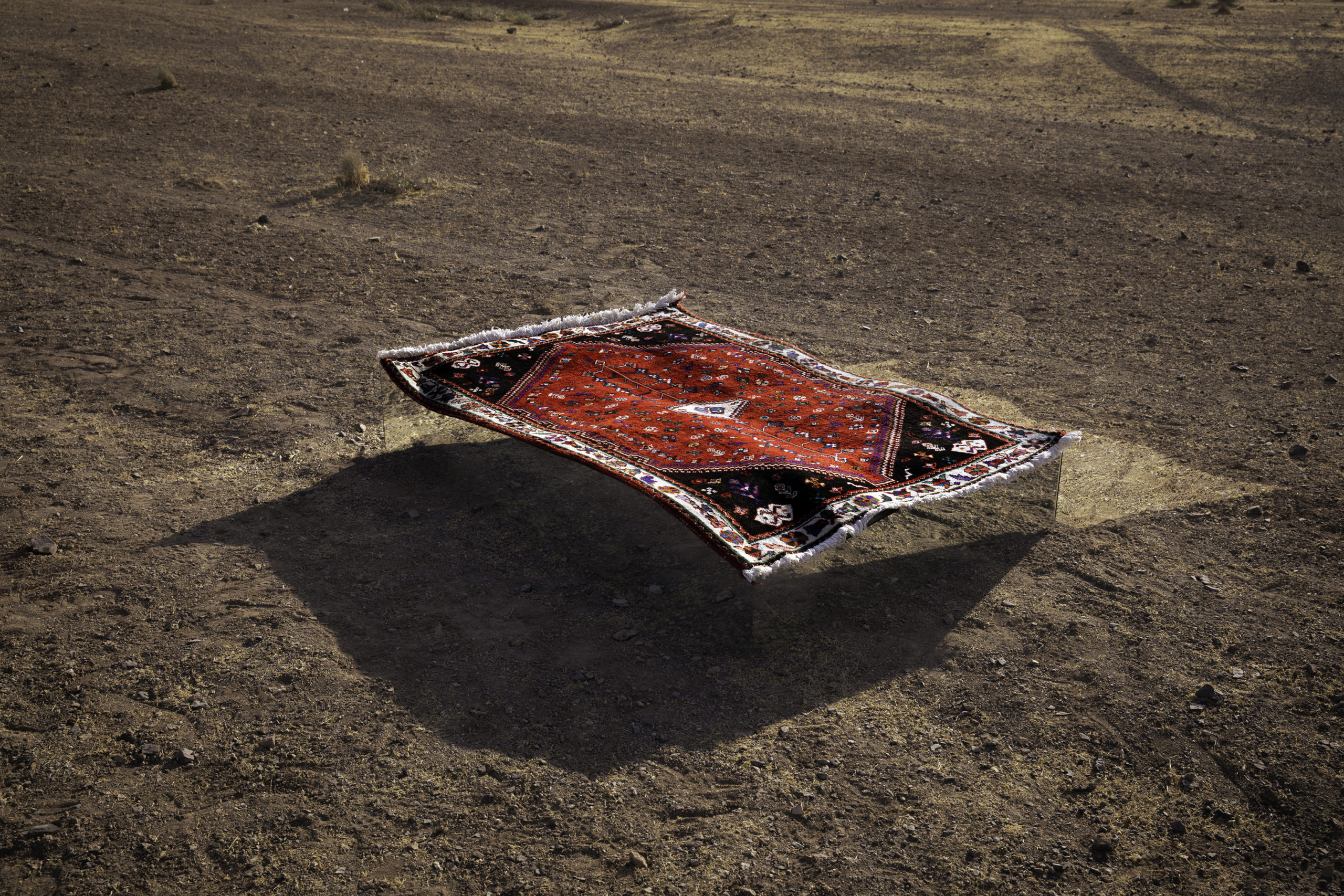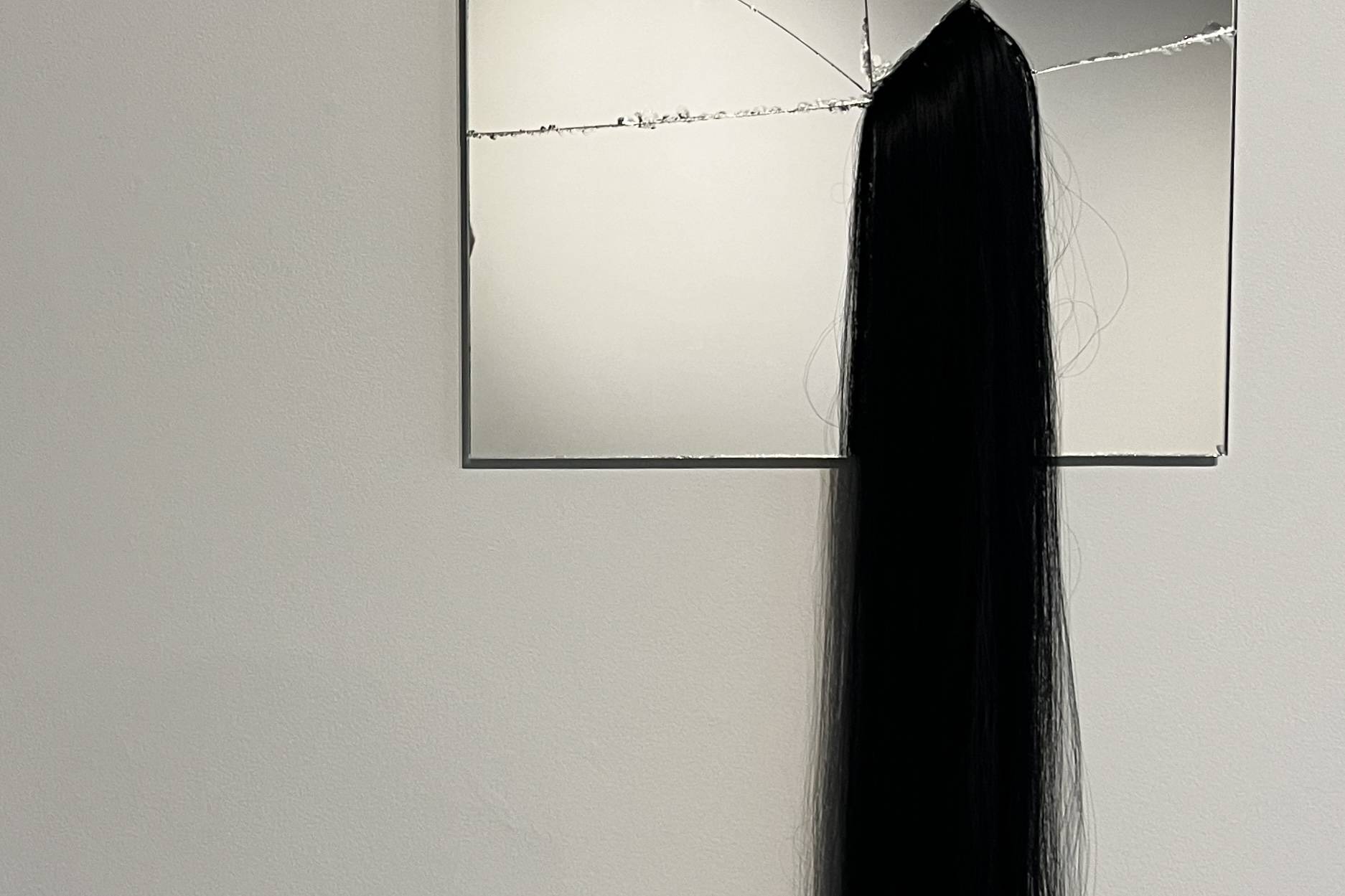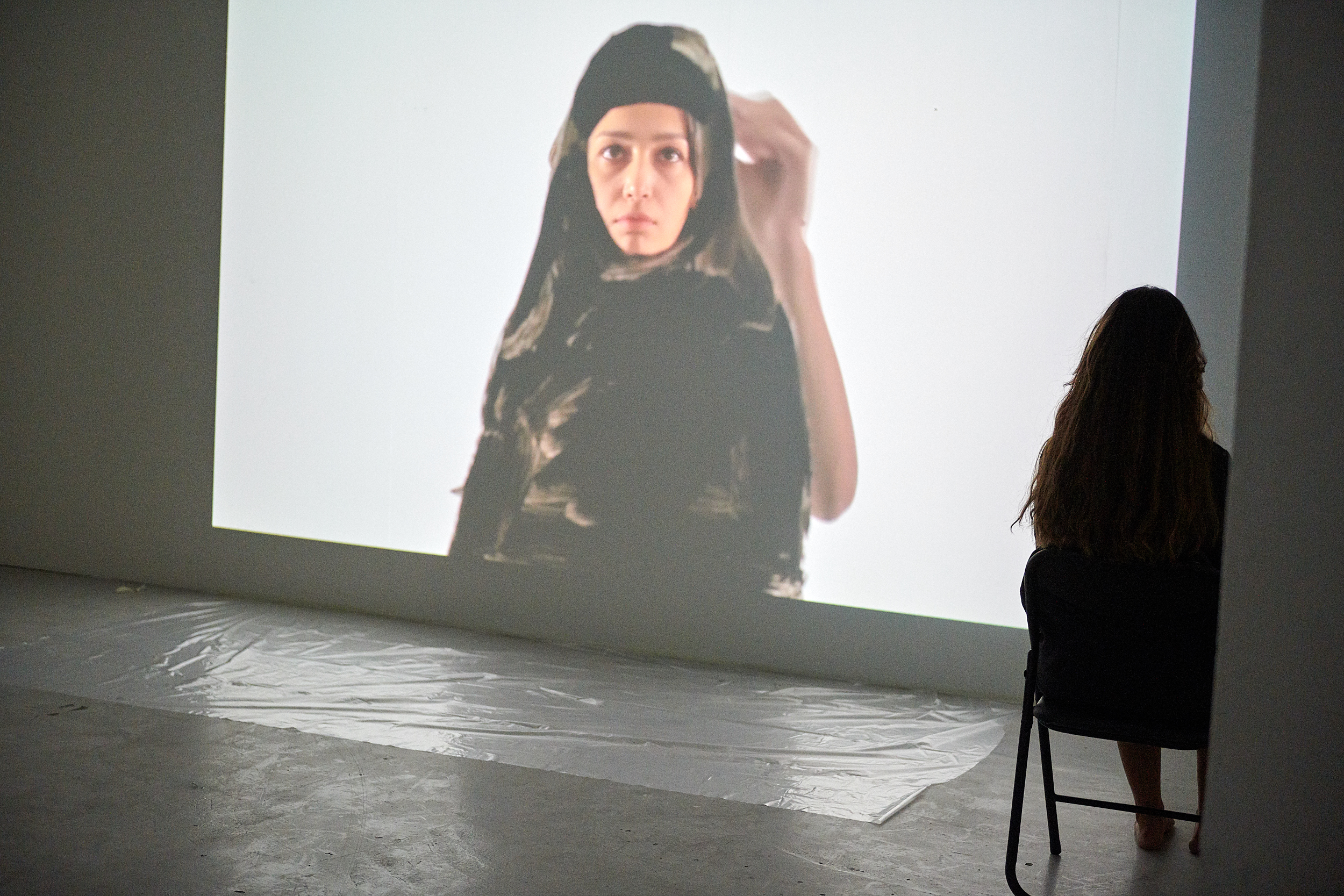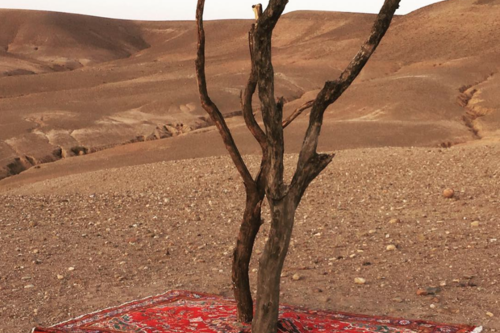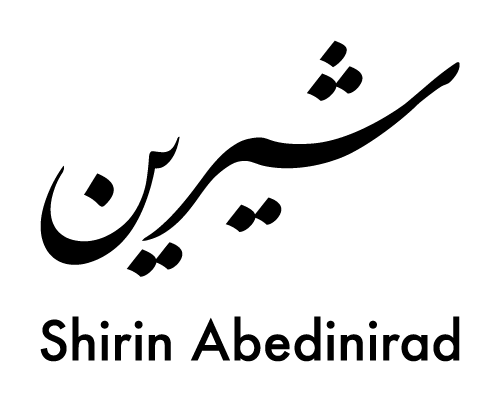
Faghan (فغان)
In 2010, at Sowing Seeds Artist’s Village Residency in India, I created my first conceptual artwork inspired by a single word from Bidel Dehlavi’s poetry: “Faghan” (فغان) – meaning cry or lament.
I wrote this word and the Persian letter “ع” (ayn) on fabric purchased from the local market, leaving the spaces within the letters hollow. The village girls who had been decorating my hands with henna over the previous days were invited to fill these voids with the same intricate patterns. Their names and faces, especially Durga’s, remain vivid in my memory – talented young women whose artistic gifts transformed my conceptual framework into a collaborative meditation on presence and absence.
Fifteen years later, returning to India and rediscovering Bidel’s poetry, I found these prophetic verses:
در هر قدم ز شوق خرام تو میکشد
خمیازهٔ فغان لب خاموش نقش پا
گاه خرام میچکد از پای نازکت
رنگ حنا به گرمی آغوش نقش پا
In every step from the joy of your gait
The footprint’s silent lips draw a yawn of lament
From your delicate foot at times drops
The color of henna into the warm embrace of the footprint
Bidel, the 17th-century Persian poet who lived in India, had already mapped this territory where Persian words meet Indian traditions, where silence holds cries, where absence becomes presence through trace and pattern. My work unknowingly followed his “naqsh-e pā” (footprint) – creating a space where a Persian lament is given form through Indian henna art.
The piece captures what Bidel understood: that the most profound expressions often exist in the spaces between – between cultures, between presence and absence, between cry and silence. Through the village girls’ participation, “Faghan” became more than a word; it became a living document of cultural exchange, a trace of encounter that, like henna on skin or footprints in dust, marks our passage through each other’s lives.
Statement written: August 6, 2025
MediumFiber ArtLocationSowing Seeds Artist's Village Residency, Rajasthan, IndiaYearDecember 2010

